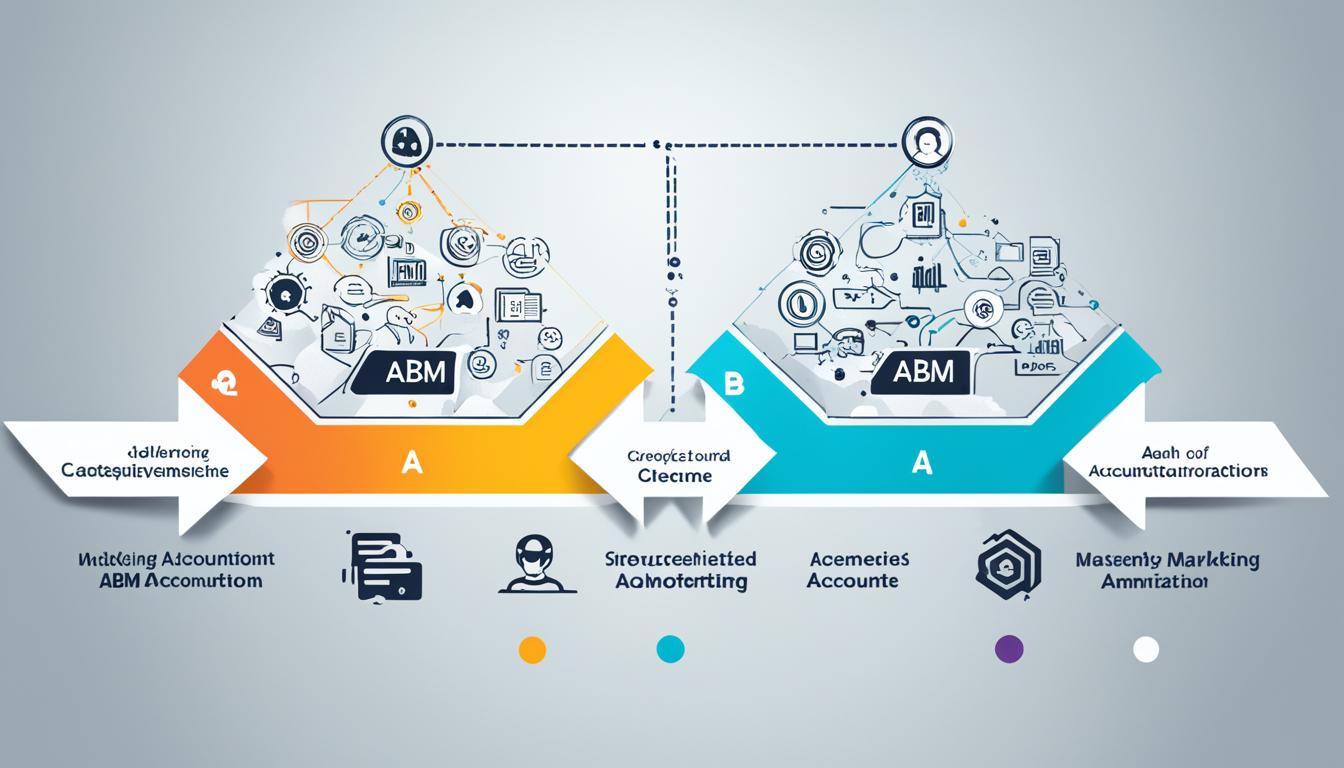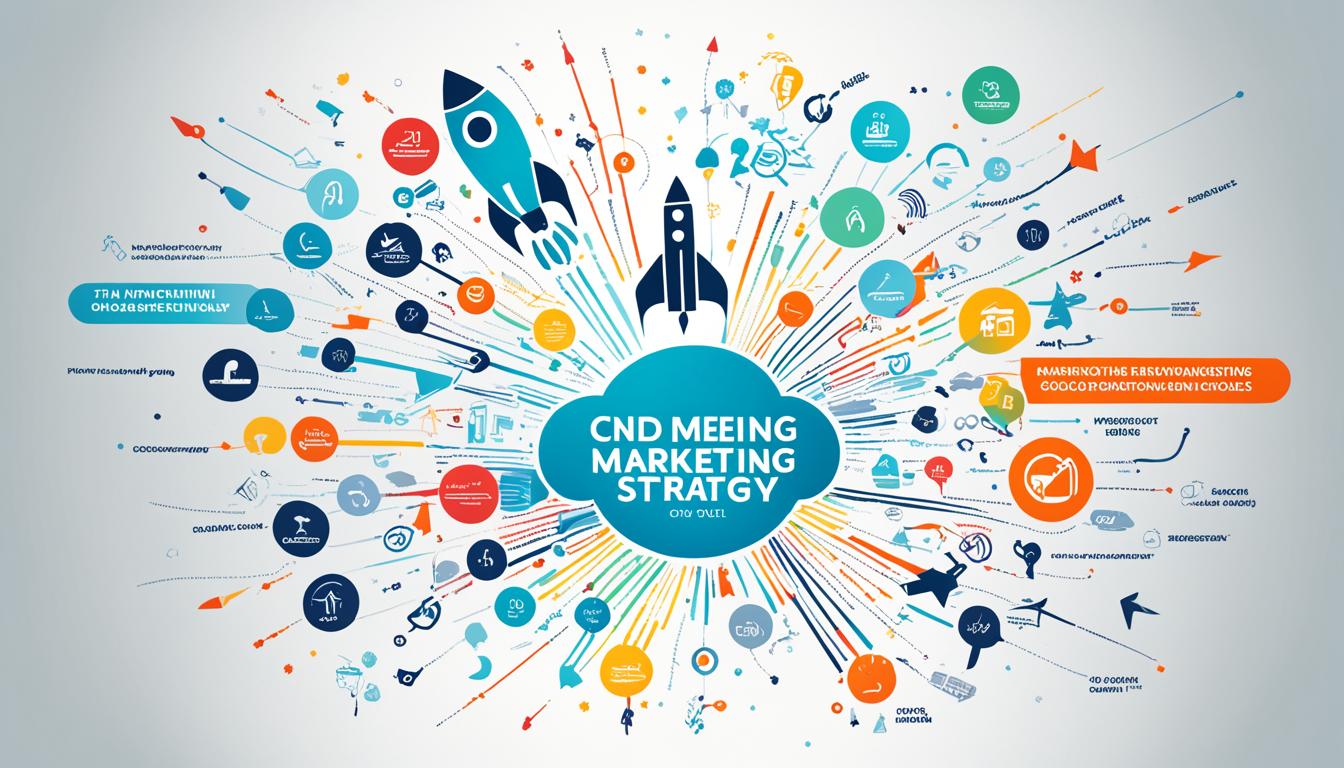Welcome to our in-depth case study on YES Bank’s marketing strategy in 2024. In this article, we will explore the innovative tactics that YES Bank employed to stay ahead in the highly competitive banking industry. With a strong focus on digital marketing and customer engagement, YES Bank revolutionized its approach to meet the evolving needs of its customers.
As the banking landscape continues to evolve, traditional marketing strategies are no longer sufficient to attract and retain customers. Banks need to leverage the power of digital marketing to reach their target audience effectively. YES Bank recognized this need and invested heavily in implementing cutting-edge digital marketing techniques to enhance its brand presence and engage customers on various online platforms.
Through a combination of data-driven insights, personalized marketing campaigns, and robust customer relationship management, YES Bank successfully crafted a marketing strategy that resonated with its target audience. By using advanced analytics and automation tools, the bank was able to deliver highly relevant and timely messages, improving customer satisfaction and overall brand loyalty.
The case study will delve into the reasons behind YES Bank’s remarkable success in 2024, analyzing the key factors that contributed to its growth and profitability. We will also explore the challenges faced by the bank and the strategic solutions that were implemented to overcome them.
Introduction to YES Bank
Welcome to the world of YES Bank, a leading Indian private sector bank with a strong focus on customer engagement and digital transformation in the realm of bank marketing. Established in 2004, YES Bank has rapidly grown to become one of the most respected and trusted banking institutions in the country.
Under the visionary leadership of CEO Prashant Kumar, YES Bank has consistently demonstrated its commitment to delivering exceptional customer service and fostering long-term relationships. As a customer-centric bank, YES Bank believes in leveraging cutting-edge technology and innovative solutions to offer comprehensive financial products and services tailored to meet the unique needs of each customer.
At YES Bank, customer engagement is the cornerstone of our marketing strategy. Through personalized communication and targeted campaigns, we strive to connect with our customers on a deeper level, understanding their financial aspirations and providing them with tailored solutions to achieve their goals. We emphasize the importance of building enduring relationships based on trust, transparency, and empathy.
In today’s rapidly evolving digital landscape, YES Bank recognizes the significance of digital transformation to stay ahead of the curve. We constantly embrace technological advancements and leverage digital channels to enhance customer experience, streamline banking processes, and offer seamless and secure digital banking solutions. Our commitment to digital innovation enables us to provide customers with convenient access to banking services anytime, anywhere.
As we embark on this journey of continuous improvement and growth, YES Bank remains dedicated to serving our customers with integrity, professionalism, and innovation. Join us as we revolutionize the banking industry and redefine what it means to be a customer-centric bank in the digital age.
Reasons for the Downfall of YES Bank
The downfall of YES Bank was primarily attributed to a series of risky investments, exposure to bad loans, and the accumulation of non-performing assets (NPAs). These factors significantly impacted the bank’s financial position and eroded customer confidence.
YES Bank’s risky investments in sectors such as real estate and infrastructure proved to be detrimental in the long run. The bank’s aggressive approach towards lending without proper risk assessment led to a substantial increase in bad loans, further exacerbating its financial woes.
The high concentration of bad loans and the subsequent rise in NPAs created a significant strain on YES Bank’s balance sheet. The inability to recover these loans severely affected the bank’s profitability and overall stability.
In addition, YES Bank’s inadequate risk management practices and weak corporate governance structures played a role in its downfall. The bank failed to promptly recognize and report its NPAs, leading to a lack of transparency and trust among investors and stakeholders.
Furthermore, YES Bank’s overreliance on short-term wholesale funding to meet its liquidity needs rendered it vulnerable to market fluctuations and disruptions. The bank struggled to maintain stable sources of funding, which further amplified its financial challenges.
Overall, a combination of these factors, including risky investments, exposure to bad loans, NPAs, weak governance, and liquidity issues, contributed to the downfall of YES Bank and its subsequent need for intervention and restructuring.
| Reasons for YES Bank’s Downfall | Impact |
|---|---|
| Risky investments | Diminished financial position |
| Exposure to bad loans | Increase in non-performing assets |
| Accumulation of NPAs | Strain on balance sheet |
| Inadequate risk management | Weak corporate governance |
| Dependence on short-term funding | Liquidity challenges |
Analysis of Problems and Learnings from the Case
As we delve deeper into the case study of YES Bank, it becomes evident that the bank faced numerous challenges that contributed to its downfall. Key issues identified include governance problems and the under-reporting of Non-Performing Assets (NPAs). These challenges shed light on the importance of transparent reporting and responsible loan growth in the banking industry.
Governance Issues
One of the primary problems faced by YES Bank was governance issues. The bank’s governance structure and practices came under scrutiny, which affected its overall credibility and trust among stakeholders. The lack of effective checks and balances resulted in risky decision-making and improper risk management processes.
To ensure future success, YES Bank needs to prioritize governance mechanisms such as setting up an independent oversight committee, implementing stricter risk management protocols, and enforcing corporate governance reforms. These measures will help restore confidence in the bank and prevent similar issues from occurring in the future.
Under-reporting of NPAs
Another significant problem identified in the case study is the under-reporting of Non-Performing Assets (NPAs). YES Bank’s failure to accurately disclose its NPAs created a false representation of its financial health and misled investors and regulators. This lack of transparency eroded trust and significantly impacted the bank’s reputation.
Learnings from this issue highlight the importance of accurate reporting and accountability. Banks must diligently monitor and report their NPAs, ensuring transparency and enabling stakeholders to make informed decisions. By doing so, banks can establish trust, foster transparency, and mitigate the risk of financial instability.
Importance of Responsible Loan Growth
The case study of YES Bank also emphasizes the significance of responsible loan growth. The bank’s aggressive lending practices without adequate due diligence led to a high proportion of bad loans, ultimately contributing to its downfall. This highlights the necessity for banks to maintain a balanced approach to loan growth, focusing on quality over quantity.
Banks must implement robust risk assessment frameworks, conduct thorough borrower evaluations, and establish effective credit risk management systems. By adopting responsible loan growth strategies, banks can minimize the risk of bad loans, improve asset quality, and safeguard their financial stability.
Summary
The analysis of problems and learnings from the YES Bank case study highlights the critical nature of governance, accurate reporting of NPAs, and responsible loan growth. These insights provide valuable lessons to other banks and emphasize the need for responsible and transparent practices within the banking industry.
| Problem | Solution |
|---|---|
| Governance Issues | – Establish an independent oversight committee – Implement stricter risk management protocols – Enforce corporate governance reforms |
| Under-reporting of NPAs | – Accurately monitor and report NPAs – Foster transparency and accountability – Rebuild trust through accurate disclosure |
| Responsible Loan Growth | – Conduct thorough risk assessments – Establish effective credit risk management systems – Prioritize quality over quantity in lending practices |
Solutions and Government Intervention
After the crisis at YES Bank, several solutions were implemented to ensure its recovery and stability. One crucial element was government intervention, which played a significant role in resolving the situation.
Government Intervention
The government took immediate action to restore confidence in YES Bank and prevent any further disruption to the financial system. Recognizing the critical importance of YES Bank in the banking sector, the government acted swiftly to address the crisis.
Under the government’s intervention, a comprehensive plan was formulated, which involved the involvement of other major banks, including State Bank of India (SBI), HDFC, and ICICI. These institutions played a crucial role in supporting the recovery of YES Bank and ensuring its long-term viability.
Involvement of SBI, HDFC, and ICICI
State Bank of India (SBI), one of the largest public sector banks in India, played a vital role in the rescue of YES Bank. SBI acquired a strategic stake in YES Bank, enabling it to infuse much-needed capital and provide the necessary support to stabilize the bank’s operations.
HDFC and ICICI, two leading private sector banks, also stepped in to support YES Bank’s recovery. They extended their assistance by providing additional funds and expertise to strengthen YES Bank’s financial position and ensure its smooth functioning.
The government’s intervention and the involvement of SBI, HDFC, and ICICI were integral in YES Bank’s recovery. These collaborative efforts demonstrated the commitment and resilience of the banking sector in resolving critical challenges and ensuring the stability of the financial system.
| Government Intervention | Role of SBI, HDFC, and ICICI |
|---|---|
| Immediate action to restore confidence | SBI acquiring a stake in YES Bank |
| Comprehensive plan to address the crisis | HDFC and ICICI providing additional funds |
| Ensuring long-term viability | Supporting YES Bank’s recovery |
SWOT Analysis of YES Bank
In order to assess YES Bank’s competitive position and growth potential, a comprehensive SWOT analysis is conducted. This analysis focuses on identifying the bank’s strengths, weaknesses, opportunities, and threats. By evaluating these factors, we can gain insights into the bank’s internal capabilities and external market dynamics.
Strengths
- Strong brand presence and recognition in the banking industry
- Robust digital infrastructure to support online banking services
- Extensive network of branches and ATMs
- Diverse product portfolio catering to the diverse needs of customers
- Experienced management team with a deep understanding of the banking sector
Weaknesses
- Inadequate risk management practices leading to high non-performing assets (NPAs)
- Dependence on wholesale funding for liquidity
- Perception of governance issues affecting customer trust and confidence
- Slow response to changing market dynamics and technological advancements
Opportunities
- Rapidly growing digital banking landscape providing opportunities for innovation and customer engagement
- Increasing adoption of digital payments and transactions
- Rising demand for personalized financial solutions
- Potential to expand operations in untapped markets
Threats
- Intense competition from established banks and emerging fintech players
- Regulatory changes impacting the banking sector
- Economic downturn and financial market volatility
- Negative public perception due to past governance issues
By examining YES Bank’s strengths, weaknesses, opportunities, and threats, we can gain a holistic understanding of the bank’s current position and future prospects. This analysis enables us to identify areas of improvement, capitalize on opportunities, and mitigate potential threats. With strategic interventions, YES Bank can leverage its strengths, address weaknesses, and navigate the evolving banking landscape to achieve sustainable growth.
The Importance of Marketing for Banks in 2024
As the banking industry continues to evolve and adapt to the digital age, marketing has become an indispensable tool for banks to stay competitive in 2024. With changing customer behavior, technological advancements, and a highly competitive landscape, banks need to prioritize their marketing strategies to meet customer expectations and build a strong brand presence.
Understanding Customer Behavior
Customer behavior in the banking industry has undergone a significant transformation in recent years. Today’s customers are digitally savvy, empowered by easy access to information, and have higher expectations for personalized experiences. They expect banks to provide convenient and seamless digital services, tailored product offerings, and proactive engagement.
Digital marketing plays a pivotal role in analyzing customer behavior and preferences. Through data-driven insights, banks can gain a deeper understanding of their customers, enabling them to create targeted and personalized marketing campaigns. By leveraging customer data, banks can tailor their messages, offers, and experiences to resonate with their target audience, ultimately driving customer engagement and loyalty.
Harnessing the Power of Digital Marketing
Digital marketing offers banks unparalleled opportunities to reach their target audience effectively. Through various digital channels such as social media, email marketing, search engine optimization (SEO), and content marketing, banks can engage with customers at every stage of their journey.
By investing in digital marketing, banks can build brand awareness, enhance customer engagement, and drive customer acquisition. Digital channels allow for real-time interactions and enable banks to provide personalized experiences based on individual customer preferences and behaviors.
Building a Strong Brand Presence
Building a strong brand presence is essential for banks to differentiate themselves in a crowded marketplace and establish trust with customers. Effective branding allows banks to communicate their unique value proposition and create an emotional connection with customers.
Digital marketing provides banks with the tools to build and strengthen their brand. Through compelling storytelling, engaging content, and consistent messaging across all digital touchpoints, banks can shape the perception of their brand and cultivate a loyal customer base.
Case Study: Brand Building Success
| Bank | Brand Building Strategies |
|---|---|
| Chase Bank | Invested in innovative digital campaigns targeting millennials and Gen Z, positioned as a tech-savvy and customer-centric bank. |
| Bank of America | Developed a comprehensive content marketing strategy, providing educational resources and thought leadership to establish credibility and trust. |
| Wells Fargo | Focused on community engagement initiatives, promoting social responsibility and aligning their brand with positive societal impact. |
These successful brand building strategies demonstrate the power of digital marketing in shaping a bank’s brand image and connecting with customers on a deeper level.
In conclusion, marketing plays a crucial role for banks in 2024. By understanding and adapting to changing customer behavior, harnessing the power of digital marketing, and building a strong brand presence, banks can position themselves for success in a competitive marketplace. Embracing digital marketing strategies will enable banks to engage with customers effectively, drive customer loyalty, and establish themselves as trusted financial partners in the digital age.
Why Traditional Marketing Strategies No Longer Work
The world of marketing has undergone a significant transformation in recent years, and traditional marketing strategies are no longer as effective as they once were. This shift can be attributed to several key factors: consumer behavior, increased competition, and the demand for measurable results.
Consumer Behavior Changes
Consumer behavior has evolved dramatically with the advent of the digital age. Customers now have access to vast amounts of information, allowing them to research products and services before making purchasing decisions. As a result, traditional marketing methods, such as print advertisements and TV commercials, hold less sway over consumer choices.
Today’s consumers are tech-savvy and prefer immersive online experiences. They have become adept at blocking out traditional advertising messages and are more receptive to personalized, targeted marketing efforts that align with their individual preferences and needs.
Increased Competition
The digital era has also brought about increased competition in all industries, including banking. With the rise of online banking and fintech companies, traditional banks are facing more pressure to differentiate themselves and capture consumer attention.
Digital marketing allows banks to reach a wider audience and create more personalized experiences, giving them a competitive edge. Additionally, advanced data analytics and targeted advertising enable banks to better understand customer needs and provide tailored solutions.
The Demand for Measurable Results
Gone are the days when marketing success was measured solely by brand visibility or intangible metrics. Today, businesses face increasing pressure to demonstrate measurable return on investment (ROI) for their marketing efforts.
Digital marketing offers precise analytics and tracking capabilities that allow banks to measure the effectiveness of their campaigns in real time. With access to data on customer engagement, conversion rates, and ROI, banks can optimize their strategies and allocate resources more efficiently.
Overall, the combination of shifting consumer behavior, increased competition, and the demand for measurable results has rendered traditional marketing strategies ineffective for banks. To stay relevant and engage with customers effectively, banks must embrace digital marketing and leverage its power to understand and connect with their target audience.
Why Digital Marketing is the Future
In today’s digital age, traditional marketing strategies are no longer sufficient for banks to stay competitive and engage with customers effectively. Digital marketing has emerged as the future of marketing for banks, offering a wide range of advantages that can drive success and growth. Let’s explore why digital marketing is crucial for banks in 2024 and beyond.
Customer Engagement
Digital marketing enables banks to engage with customers in a more personalized and interactive manner. Through targeted email campaigns, social media advertising, and personalized website experiences, banks can deliver tailored messages and offers that resonate with individual customers. This level of customer engagement builds trust, loyalty, and ultimately drives conversion.
Data-Driven Insights
Digital marketing provides banks with access to valuable data and analytics that offer deep insights into customer behavior, preferences, and trends. By analyzing this data, banks can make informed marketing decisions, identify opportunities for growth, and refine their strategies to meet customer expectations. Data-driven insights also help banks optimize their marketing campaigns and allocate resources more effectively, resulting in better ROI.
Cost-Effectiveness
Compared to traditional marketing channels, digital marketing offers a cost-effective approach for banks. By leveraging online platforms, banks can reach a wider audience at a fraction of the cost of traditional advertising methods. Digital marketing allows banks to allocate their marketing budgets more efficiently, focusing on strategies that deliver measurable results and maximize their return on investment.
Adaptability
Digital marketing provides banks with the flexibility and adaptability needed to keep pace with rapidly changing consumer behaviors and market dynamics. With digital channels, banks can quickly adjust their marketing messages, tactics, and campaigns to align with evolving customer needs. This agility allows banks to stay relevant, maintain a competitive edge, and seize emerging opportunities in the digital landscape.
Comparison of Traditional Marketing and Digital Marketing
| Marketing Channel | Traditional Marketing | Digital Marketing |
|---|---|---|
| Cost | High (Print ads, TV/radio commercials) | Cost-effective (Online ads, social media campaigns) |
| Reach | Limited (Local/niche audience) | Wider audience (Global reach) |
| Targeting | Broad targeting | Precise targeting (based on demographics, interests) |
| Measurability | Limited (Difficult to track ROI) | Highly measurable (Track clicks, conversions, engagement) |
| Flexibility | Less adaptable (Long lead times, expensive changes) | Highly adaptable (Real-time adjustments, A/B testing) |
As the banking industry continues to evolve, embracing digital marketing strategies is essential for banks to thrive in the future. By leveraging customer engagement, data-driven insights, cost-effectiveness, and adaptability, banks can connect with customers on a deeper level and achieve long-term success in the digital era.
Conclusion
In conclusion, the case study of YES Bank’s marketing strategy in 2024 highlights the importance of customer-centric approaches in banking marketing strategies. The downfall of YES Bank serves as a reminder that banks must continuously adapt and evolve their marketing approaches to meet the changing needs and expectations of customers.
The future of banking lies in embracing digital marketing techniques and leveraging data-driven insights to engage with customers effectively. Traditional marketing strategies are no longer sufficient in today’s digital age, where consumer behavior is rapidly evolving, competition is increasing, and measurable results are demanded. Banks must prioritize digital marketing to stay relevant and build brand loyalty.
By adopting a customer-centric approach, banks can create personalized experiences, address customer pain points, and offer tailor-made solutions. This not only enhances customer satisfaction but also drives customer acquisition and retention. A customer-centric marketing strategy enables banks to build trust, establish strong brand presence, and position themselves as industry leaders in the future of banking.








